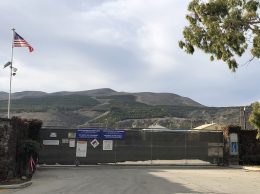Dubroff: Radical changes necessary to recover from pandemic
IN THIS ARTICLE
- Columns Topic
- Henry Dubroff Author
By Henry Dubroff Friday, May 15th, 2020
With no sign of a quick return to health for retail and tourism, universities going virtual and signs of reshoring for manufacturers, some of the contours for a post-pandemic economy are beginning to emerge.
The numbers are striking — even before the full impact of Nordstrom and others closing stores takes effect.
Before the pandemic, consumer spending on travel, restaurants and retail totaled about 19 percent of GDP and accounted for 20 percent of payrolls or just over 30 million jobs, according to data compiled by Ariadne, a regional investment firm. Many of those jobs are already gone.
With Nordstrom closing, chains like J. Crew in bankruptcy and others on the ropes, we may not have hit bottom in that sector. The rules are changing for restaurants and tasting rooms, hotels and entertainment venues.
And that means a major rethink for how the region conducts its business.
Radical change will be required if travel and leisure business is going to return to anything like its former levels.
Does that mean closing State Street in Santa Barbara and rethinking what the future of Main Street in Ventura and Higuera Street in San Luis Obispo looks like? Almost certainly.
Does it mean changing the way cities permit pop up stores and retail renovations to reduce costs and time? Absolutely.
Does it mean an end to reliance on cruise ships and international tourists and fewer flights into the region’s once-bustling airports? At least for this summer and beyond, the answer is clear.
At the end of the day, the changes may be so radical that the only way for cities to preserve their core retail centers is to increase the number of local residents who shop and dine repeatedly to replace tourists, who are one-and-done shoppers.
The pandemic will change the economic trajectory for urban centers like Thousand Oaks, Ventura, Santa Barbara and San Luis Obispo.
IMPACTS OF VIRTUAL EDUCATION
News that Cal Poly SLO and CSU Channel Islands will go virtual for almost all classes this fall should accelerate changes in the urban core of our communities. Virtual classes will hollow out areas like Isla Vista and communities in SLO, Camarillo and Thousand Oaks that depend on student housing and spending for their livelihood.
What is means for Cal Poly’s “learning by doing” philosophy is still not clear and a big question is whether the highly interactive and experience-based aspect of entrepreneurial education will survive. Will Cal Poly’s “HotHouse” and California Lutheran University’s “Hub 101” incubators reopen under new rules or even expand as a smaller list of highly valuable live learning experiences becomes more in demand? Will UC Santa Barbara and Westmont College take the opportunity to expand in downtown Santa Barbara, where real estate is going to be cheaper and the city will, for once, welcome more students spending money downtown?
These are huge questions which are going to be answered in the next year or so that will reshape the region.
MANUFACTURING WILL BE KEY
Finally, a persistent theme in jump starting the economy has been the draw down in manufacturing as it moves off shore.
A return to domestic manufacturing could boost the fortunes of Oxnard, Santa Maria and Simi Valley, where land and labor are available and where proximity to West Coast markets, the Pacific Rim and Mexico are huge global advantages.
Ventura County has been certifying medium- and large-sized manufacturers for reopening — something Elon Musk might take note of as he fights with Bay Area bureaucrats over the future of Tesla.
The future is uncertain but there is opportunity for those communities willing to seize it.
• Contact Henry Dubroff at [email protected].
Related Articles
Opinion: The pandemic changed how people work, and they’re not going back
 Friday, October 14th, 2022
Friday, October 14th, 2022










